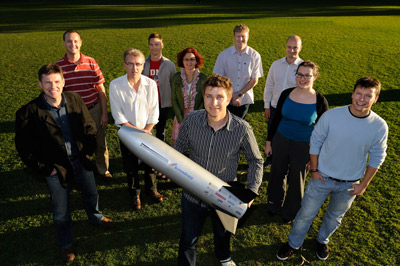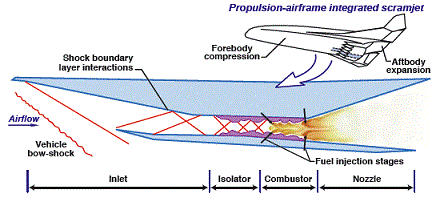Australian scramjet test illustrates the importance of suborbital research


Space rocket launches tend to get a lot of attention in the media, particularly when humans are on board. There’s something a little … strange … about watching a human-made object make it into orbit, even as we’re well into our sixth decade of sending stuff into the solar system.
While many people think that a space rocket will always make it into orbit around Earth, at the least, that’s not the way orbital mechanics works. Rockets must reach a certain height and speed in order to orbit our planet. Anything less, and the rocket is considered a suborbital one — one that essentially blasts up and then falls back down to Earth.
These launches are still valuable, however. Because they’re cheaper than orbital missions, they provide a platform for small businesses as well as universities to perform work. For example, they often can feature a few minutes of weightlessness where researchers can get a quick glimpse of how microgravity affects manufacturing or life processes. They’re also good for a scout of weather conditions or even to perform quick bursts of astronomy.
The University of Queensland plans to launch a scramjet aboard a suborbital rocket. This type of engine, which can be used in hypersonic speeds, is expected to reach 8,600 kilometres an hour during its launch from the Andøya Rocket Range, a Norwegian launch site 300 kilometres inside the Arctic circle.

“We have been working with our project partners to test the components of this scramjet in the laboratory with wind tunnels and simulations for the past three years, but testing the scramjet in real flight conditions will be the ultimate test,” stated Russell Boyce , the hypersonics university chair who leads the “Scramspace” project.
“The test period itself will last for just three seconds before the scramjet completely combusts, but the amount of data we can collect in those seconds is enormous. It will give us insights into hypersonic physics, hypersonic combustion, performance of materials and components and how we will make these vehicles fly in future.”
The scramjet will be shipped there in August. It would be a spectacular test to watch, as it will go up to 340 kilometres in altitude on a two-stage rocket. Then the scramjet vehicle will separate itself from the launch vehicle and prepare for re-entry — reaching Mach 8 before it undergoes a planned self-destruction over the water.
About $5 million in funding for the Scramspace project came from the Australian Space Research Program. More information on the researchers’ activities is here.
While Australia is one player in the scramjet research field, the applications of this research are also reaching international agencies such as NASA and DARPA (the U.S. Defense Advanced Research Project Agency). DARPA, in fact, has done testing with the Australian Defence Science and Technology Organization, such as this 2007 examination that was supposed to examine how to create an engine with efficient thrust compared to drag.
Howell E (2013-07-12 00:31:07). Australian scramjet test illustrates the importance of suborbital research. Australian Science. Retrieved: Nov 15, 2025, from https://ozscience.com/space/australian-scramjet-test-illustrates-the-importance-of-suborbital-research/
 Follow
Follow
1 thought on “Australian scramjet test illustrates the importance of suborbital research”
Comments are closed.